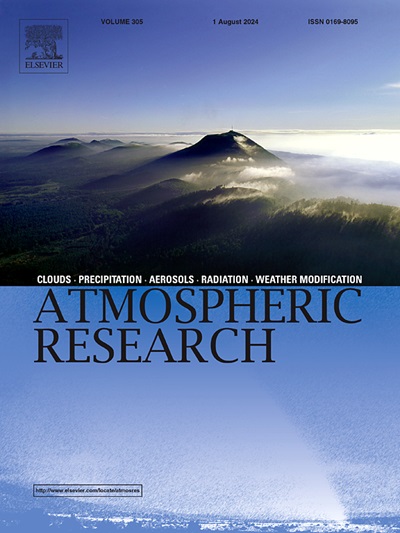Increasing frequency of warm-dry climate-year type in Northeast China: A major contributor to maize yield shocks
IF 4.5
2区 地球科学
Q1 METEOROLOGY & ATMOSPHERIC SCIENCES
引用次数: 0
Abstract
Under the context of climate change, the climatic conditions for maize during different growth stages in Northeast China (NEC) exert a markedly varying influence on the final yield. We define nine Climate-Year Types (CYTs) based on the probability density functions of temperature and precipitation, aiming to explore the underlying drivers of climatic factors contributing to yield shocks. By incorporating a panel regression model, we quantitatively analyze the key compound climate conditions that influence maize yield across different growth stages. The results indicate that the main CYTs are biased towards drier conditions (Cold-Dry, Rainless, Warm-Dry) from 1992 to 2021, while the probability of warmer conditions (Normal-Warm, Warm-Wet, Warm-Dry) is expected to increase throughout the whole growth stage in the future. The overall yield shock is approximately 20 % in the historical period, with projected exacerbation under the future warming scenarios. At present, the dominant CYTs that determines the final yield of maize is changing from colder and wetter conditions in the growing stage to drier and warmer conditions in the reproductive stage. Moreover, the Warm-Dry CYT emerges as the most significant climatic factor influencing maize yield, with each occurrence associated with a 3.70 % decrease in yield throughout the whole growth stage in the historical period. Notably, the frequency of Warm-Dry CYT is expected to increase in most cities of NEC, which remains a major contributor to yield shocks, with the magnitude of its impact likely to intensify in the future. In summary, these studies identify the key climate types affecting maize yield at different growth stages in NEC, emphasizing the impact of compound heat and drought. This will provide a scientific basis for targeted measures to enhance yield and mitigate risks.
东北暖干气候年型频率增加:玉米产量冲击的主要因素
在气候变化的背景下,东北地区不同生育期玉米的气候条件对最终产量的影响存在显著差异。基于温度和降水的概率密度函数,我们定义了9种气候年类型(CYTs),旨在探索影响产量冲击的气候因子的潜在驱动因素。采用面板回归模型,定量分析了不同生育期影响玉米产量的主要复合气候条件。结果表明:1992 ~ 2021年,青枯期主要偏干(冷干、少雨、暖干),未来整个生长阶段偏暖(常暖、暖湿、暖干)的概率增加;在历史时期,总体产量冲击约为20%,预计在未来变暖情景下会加剧。目前,决定玉米最终产量的主导青枯期正由生长期的寒冷湿润条件向生殖期的干燥温暖条件转变。此外,暖干型CYT是影响玉米产量最显著的气候因子,在历史时期,每发生一次CYT,整个生育期的产量都会下降3.70%。值得注意的是,暖干CYT的频率预计将在NEC的大多数城市增加,这仍然是产量冲击的主要因素,其影响的程度可能在未来加剧。综上所述,这些研究确定了影响东北地区不同生育期玉米产量的关键气候类型,强调了热旱复合气候的影响。这将为有针对性地提高产量和降低风险提供科学依据。
本文章由计算机程序翻译,如有差异,请以英文原文为准。
求助全文
约1分钟内获得全文
求助全文
来源期刊

Atmospheric Research
地学-气象与大气科学
CiteScore
9.40
自引率
10.90%
发文量
460
审稿时长
47 days
期刊介绍:
The journal publishes scientific papers (research papers, review articles, letters and notes) dealing with the part of the atmosphere where meteorological events occur. Attention is given to all processes extending from the earth surface to the tropopause, but special emphasis continues to be devoted to the physics of clouds, mesoscale meteorology and air pollution, i.e. atmospheric aerosols; microphysical processes; cloud dynamics and thermodynamics; numerical simulation, climatology, climate change and weather modification.
 求助内容:
求助内容: 应助结果提醒方式:
应助结果提醒方式:


